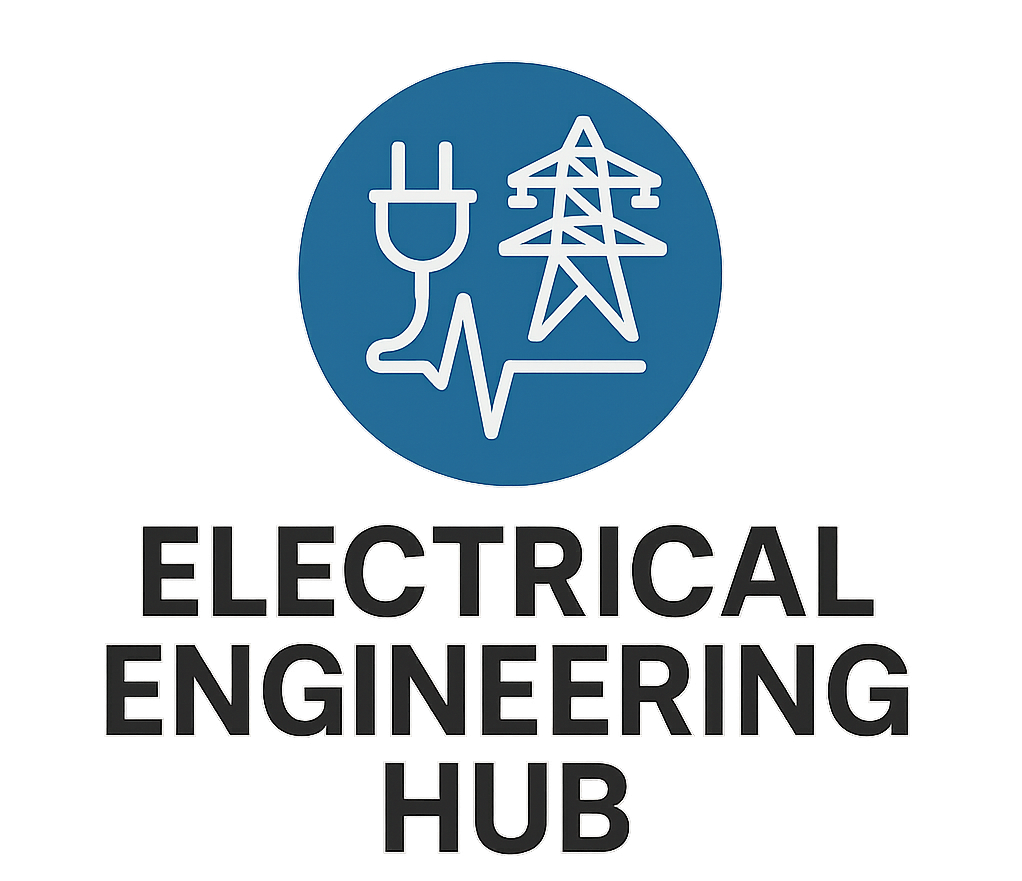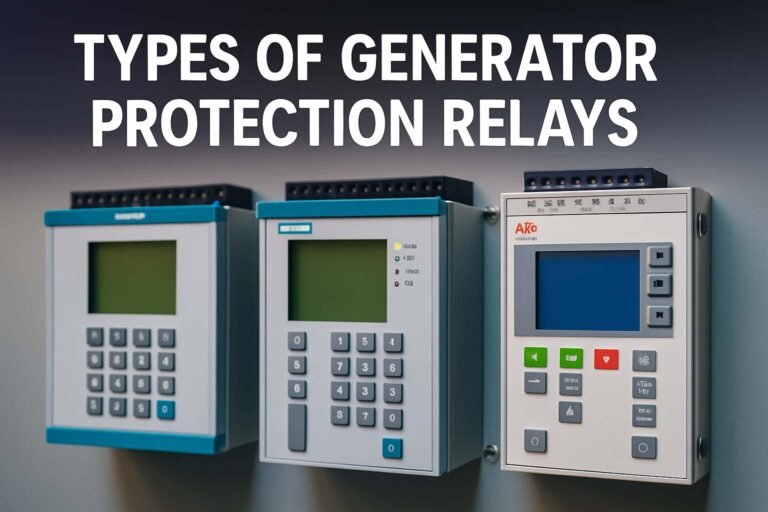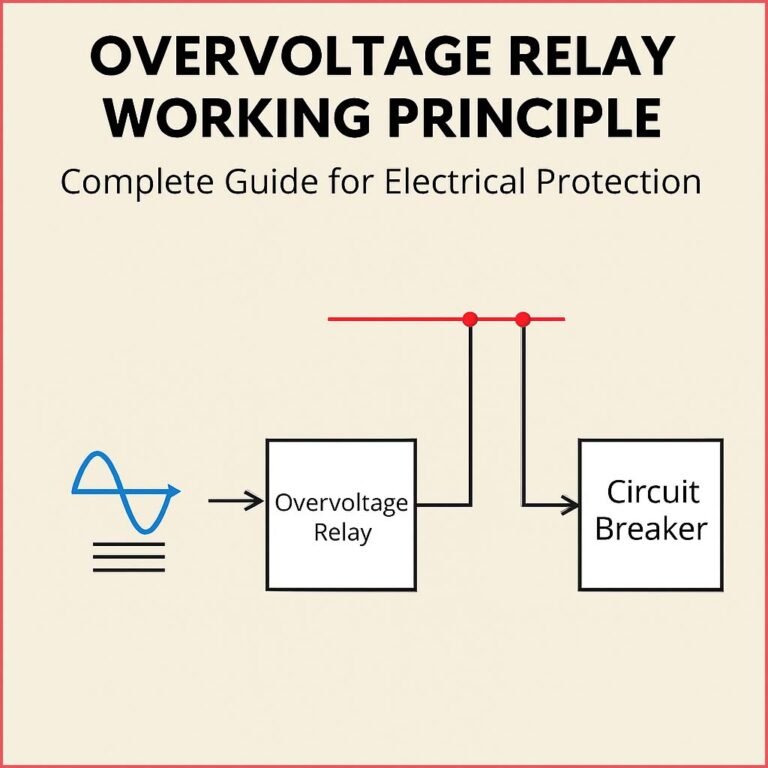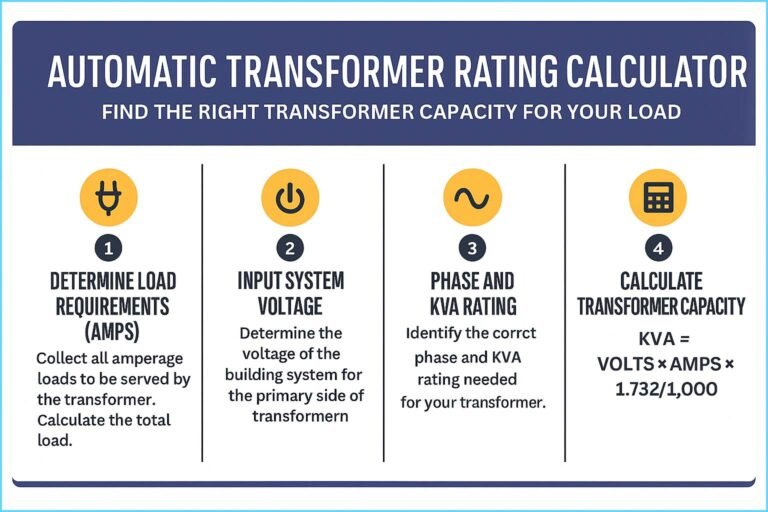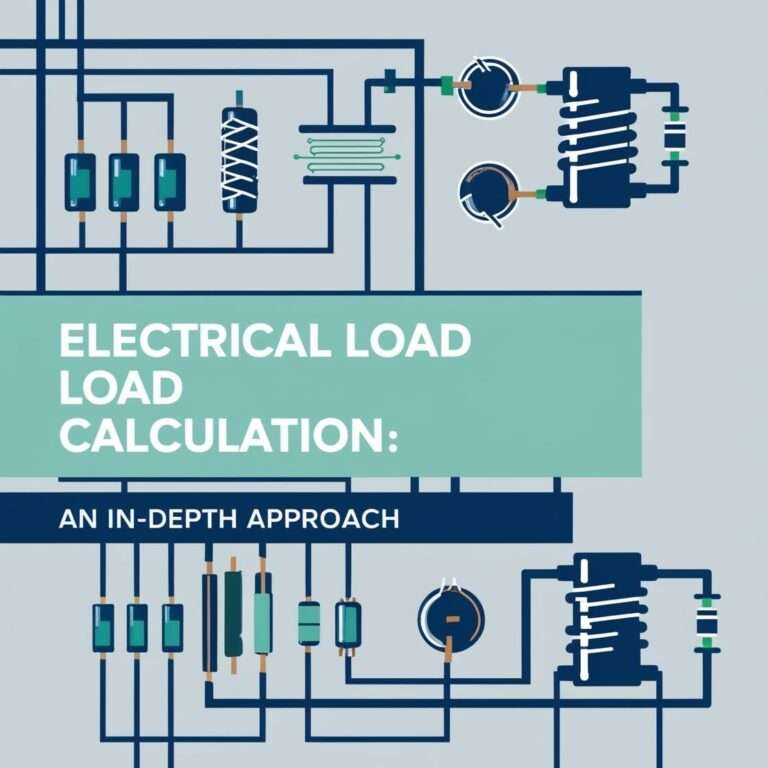What Type of Backup Protection is Used for an Alternator?
Introduction
Backup protection for an alternator plays a crucial role in the safety and reliability of power systems. An alternator is a primary source of electrical energy in power plants. It must be protected from internal faults, system disturbances, and failures in connected equipment.
Primary protection systems usually act first to isolate faults. But what if the primary protection fails? This is where backup protection steps in. It acts as a safety net to protect the alternator from severe damage.
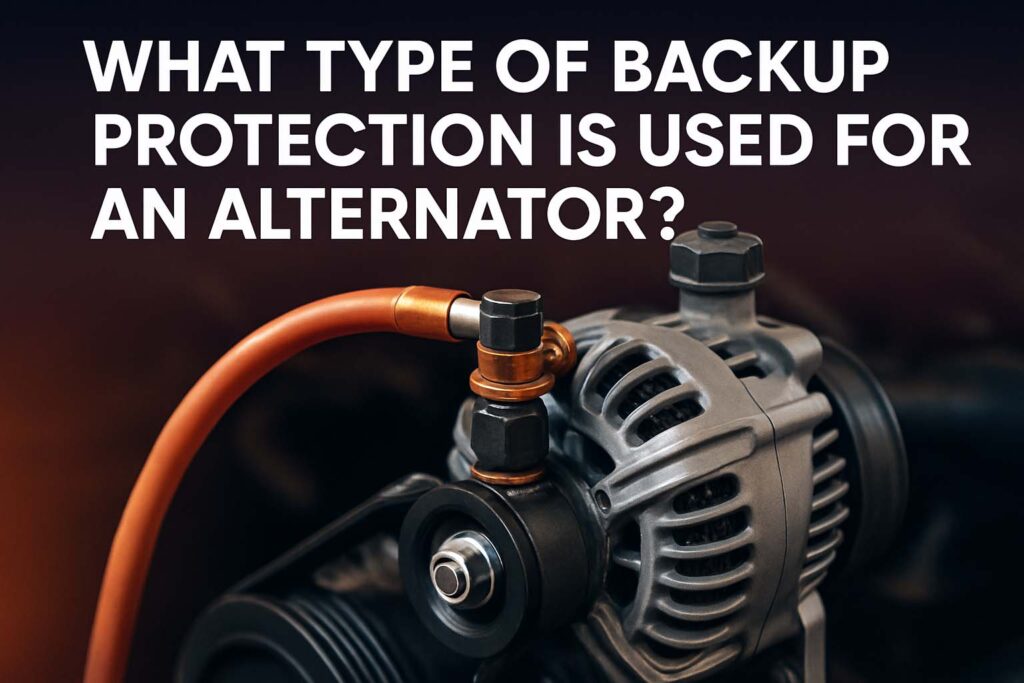
This article explains the types of backup protection for an alternator, their technical operation, and real-world applications.
Table of Contents
Table of Contents
Why Backup Protection for an Alternator Is Important
An alternator is exposed to several types of electrical faults like stator winding faults, rotor earth faults, unbalanced loading, overcurrent, and external system faults.
While the primary protection system handles most of these, it may sometimes fail due to:
- Relay failure
- CT or PT malfunction
- Communication failure
- Human error in settings
Backup protection ensures faults are still cleared, preventing costly damage and system blackouts. It operates with a time delay and ensures complete fault isolation if the primary system fails.
Know more about Types of Faults in Transmission Lines
Types of Backup Protection for an Alternator
There are several types of backup protection schemes commonly used. These schemes are chosen based on fault type, system configuration, and reliability requirements.
1. Time-Delayed Overcurrent Protection
This is the most basic form of backup protection. It operates when the current exceeds a set value for a specific time. If the fault current persists beyond the time delay, the overcurrent relay trips the alternator breaker.
Application:
Used for phase faults and ground faults not cleared by the primary unit protection.
Advantages:
- Simple and cost-effective
- Wide coverage
- Can coordinate with downstream protection
Disadvantages:
- Slower fault clearing time
- Less sensitive to low-level faults
Know more about Types of Alternator Protection
2. Distance Protection as Backup
Distance protection works by measuring the impedance between the relay and the fault. It is more selective and faster than time-overcurrent protection.
Application:
Often used in grid-connected alternators, especially in large power systems.
Advantages:
- Higher speed than overcurrent relays
- More selective
- Can be used in backup zone
Disadvantages:
- Requires accurate line impedance data
- Not effective for faults close to the generator
Know more about Differential Protection of Alternator
3. Reverse Power Protection
This is not only a primary function but also serves as a backup when the alternator starts absorbing power instead of supplying it. This usually happens during prime mover failure.
Application:
Protects the alternator from motoring, which can overheat the rotor.
Advantages:
- Prevents mechanical damage
- Ensures healthy shutdown
Disadvantages:
- Not suitable for all types of faults
4. Backup Differential Protection
This is a zone-based protection that monitors current entering and leaving the alternator windings. If there’s a mismatch beyond set limits, the relay operates.
Application:
Used as backup to main differential protection in case of internal stator faults.
Advantages:
- Highly sensitive to internal faults
- Fast operation
Disadvantages:
- Requires CT matching
- Costlier than other schemes
Know more about CT Polarity for Differential Protection
5. Under Frequency and Over Frequency Protection
While not direct fault protection, these relays protect the alternator from abnormal system frequency conditions.
Application:
Acts as backup in grid failure scenarios or generator control issues.
Advantages:
- Prevents mechanical stress
- Maintains system stability
Disadvantages:
- Not selective for electrical faults
Technical Overview in Tabular Format
| Protection Type | Primary Purpose | Used as Backup For | Speed | Selectivity |
|---|---|---|---|---|
| Time-Overcurrent Relay | Overload and phase fault detection | Stator faults, transmission faults | Slow | Moderate |
| Distance Relay | Impedance-based fault detection | Line faults not cleared by primary | Fast | High |
| Reverse Power Relay | Detects power reversal | Prime mover failure | Fast | Specific |
| Differential Protection | Detects internal winding faults | Backup to primary differential | Fast | High |
| Frequency Protection | Detects abnormal frequency | System instabilities | Moderate | Low |
Coordination of Backup Protection with Primary Protection
Backup protection must be properly coordinated with the primary protection system. This includes:
- Time Coordination: Backup relays must wait long enough to allow the primary system to clear the fault first. Typical time delay is 200–500 ms.
- Zone Coordination: Backup zones are usually broader than primary zones, ensuring wider coverage.
- Sensitivity Adjustment: Backup relays should be slightly less sensitive to avoid unnecessary tripping on transient conditions.
Modern numerical relays make this coordination easier through digital settings, event recording, and self-testing features.
Know more about Overcurrent Protection of Transformer
Factors to Consider While Choosing Backup Protection
Several factors influence the selection of the right backup protection scheme:
- System Size: Large alternators need faster, more selective protection like distance and differential backup.
- Cost Constraints: Smaller plants may rely on overcurrent relays due to lower cost.
- Relay Coordination: Must align with the rest of the system’s protection philosophy.
- Operating Environment: Harsh conditions may limit the type of equipment used.
Backup protection should be reliable, maintainable, and tested regularly. Relay miscoordination or failure can have major consequences.
How Modern Power Plants Use Backup Protection for an Alternator
In modern power plants, digital protection relays are used for both primary and backup protection. These relays are microprocessor-based and can handle multiple protection functions in one unit. They offer features such as:
- Programmable logic
- Remote monitoring
- Event and fault recording
- Self-diagnosis
In addition, SCADA systems and communication protocols like IEC 61850 allow coordination and control of backup protection remotely.
Conclusion
Backup protection for an alternator is essential to ensure system safety and reliability. When primary protection fails, backup schemes like time-overcurrent relays, distance protection, reverse power protection, and differential protection step in to clear faults.
Every alternator, big or small, must have backup protection tailored to its operating environment. While backup protection may act slower than primary systems, it remains a vital part of generator protection strategy.
Follow Us on Social:
Subscribe our Newsletter on Electrical Insights for latest updates from Electrical Engineering Hub
#AlternatorProtection, #BackupProtection, #ElectricalEngineering, #PowerSystemProtection, #GeneratorProtection, #RelayProtection, #AlternatorBackupRelay, #ElectricalSafety, #ProtectionSchemes, #PowerGeneration, #DifferentialProtection, #OvercurrentRelay, #ElectricalRelays, #IndustrialElectrical, #EngineeringKnowledge
